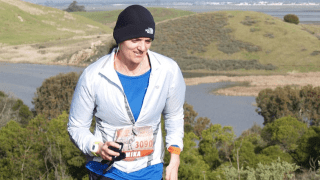“I’m a runner,” Mika Reiner Mayer said to her surgeon. “If you can’t save my leg, don’t wake me up!”
In a few short months, Mayer’s entire life had flipped upside down, and she was scared.
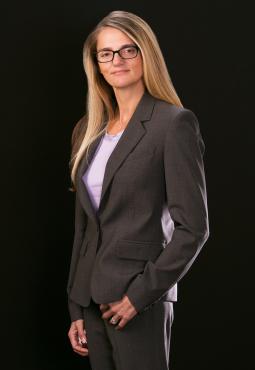
She had always been the healthiest member of her family. More than simply a runner, Mayer ran ultramarathons, addicted to “being out in nature,” she says. She rigorously followed an athlete’s healthy lifestyle: a vegan diet, plenty of sleep, no caffeine or alcohol. She was blessed with the low heart rate typical of someone in her great physical condition.
So, it made no sense when, as she was about to turn 46, walking upstairs suddenly left her gasping for air. Was it her heart? A lung problem? Doctors couldn’t say. One criticized her diet. Another suggested “exercise-induced asthma” and gave her an inhaler. No help.
It got worse. She gained weight even though eating had become difficult. She had constant stomach discomfort, which grew into serious pain. Once, when she sprained an ankle and tore a ligament, she remembers that her stomach hurt more than her ankle.
It was only when Mayer visited a surgeon to inquire about a minor hernia that the reality began to emerge. Mayer gushed forth, spelling out all of her difficulties. “I tend to present like someone who’s neurotic,” she laughed.
More Than a Hernia
However, the surgeon knew immediately that more than a hernia was at work here. He sent Mayer for a computed tomography scan. The results, as unsettling as they were, explained everything. Mayer had a retroperitoneal liposarcoma — a rare malignant tumor of fatty tissue — lodged in her abdomen.
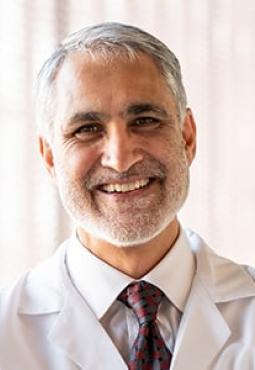
“This is such a unique kind of tumor,” explained surgical oncologist Vijay Trisal, M.D., City of Hope’s chief medical officer. “There are only about 1,500 of them in the U.S. every year. Most doctors never see one in their lifetime.”
Weighing several pounds and measuring some 10 inches long, Mayer’s football-sized invader had likely been growing for years. One section pressed against Mayer’s left lung, explaining her breathing troubles. Another part was squeezing her intestines — no wonder eating was difficult — as well as wrapping around her ureter and one kidney. The tumor even stretched down her thigh.
Mayer had never heard of this form of cancer, even though her work brings her in close contact with health and medical professionals. As a patent attorney in life sciences, she helps inventors of drugs, biological research tools and medical devices protect their intellectual property. Her clients are doctors, scientists and CEOs. She has no trouble absorbing reams of data from medical journals and research papers.
Tough — but 'Not Invincible'
But when she began reading about the mass that was growing inside her, she felt fear.
“I’m tough, but I’m not invincible,” she said. “I was pretty sure this cancer was going to kill me ... I didn’t know what to do next. I needed help.”
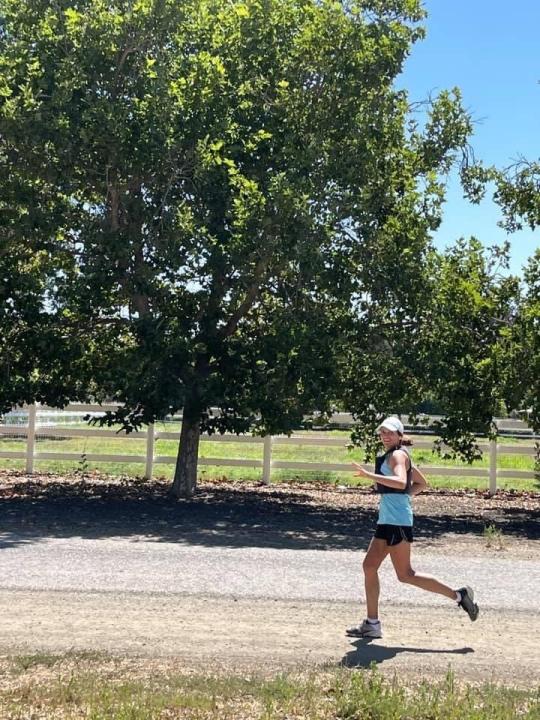
She worried that her cancer would wipe out cherished future plans with her wife, Colette Reiner Mayer. They were raising three teenagers who would soon leave home. “We’d be getting our life back as ‘empty nesters,’” she said wistfully.
It would be perfectly normal for patients in similar circumstances to begin calling around, asking friends and relatives for the names of specialists, going on Google to investigate various hospitals. Mayer did all that, but she also had the advantage of all those medical and science connections. As soon as she went public with her condition, her phone began to ring.
“Doctors were calling,” she recalls. “They all wanted to get their hands on this tumor!” — no doubt relishing the opportunity to work on something so rare.
Mayer didn’t want to be just a statistic or part of a journal article or research project. She wanted a top physician who would listen. With help provided by her sister, Maya Fidler, she found City of Hope and Trisal, the Dr. Norman & Melinda Payson Professor in Medicine.
“Dr. Trisal answered all of my questions and wasn’t dismissive,” she said.
A Tricky Surgery
“She was scared,” Trisal remembers. “Even before we met face to face, there were many phone calls and emails back and forth.
“I had to calm her down,” he continued. “And when we did meet, I wanted to make sure she knew I had her best interests at heart — it wasn’t just some mechanical thing. Health care has become too mechanical, too impersonal. We need to change that.”
Surgery is the preferred treatment for most liposarcomas because these tumors don’t generally respond to chemotherapy or targeted therapies, and Trisal says radiation would “wreak havoc” on too many healthy organs in the region.
On the other hand, to make sure all of the cancer is removed, many surgeons will take out adjacent organs — like Mayer’s kidney — as well.
Trisal sought to strike a careful balance: getting rid of the entire tumor while preserving as much of Mayer’s internal structures as he could.
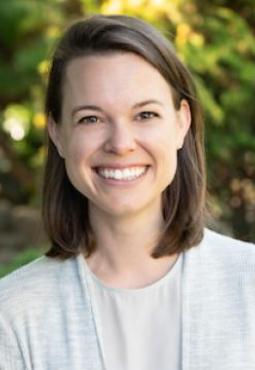
And that’s exactly what he did, aided by surgical fellow Kristen Limbach, M.D. During surgery, a stent was placed in Mayer’s ureter to stabilize it so that the tumor could be carefully peeled away. The team also successfully freed the kidney from the cancerous mass, saving the organ. Trisal then personally delivered the tissue to the pathologist to make sure the margins around the tumor were cancer free. They were. Success all around!
Oh, and for good measure, Trisal repaired Mayer’s hernia, too.
“I was already there, along the same route,” smiled Trisal. “It wasn’t a big additional thing to do.”
But what about the leg?
When Mayer awoke from surgery, she was terrified her worst nightmare had happened. “I couldn’t feel my leg,” she recalled. “Movement is so important to me. I couldn’t believe they woke me up! I was tearing up. I was losing it!”
She Would Run Again
Trisal explained that he needed to resect some superficial nerves in the skin of her thigh to extract the tumor. No motor nerves were severed. He reassured Mayer that sensation would return as the nerves grew back and, even more important, she would run again.
To be sure, the first few days were difficult, with Mayer hobbling around with a walker. But athletes mend quickly. Within two weeks, Mayer was up and about, vacuuming the house. And barely three months postsurgery, Trisal cleared her to start jogging.
There’s always a chance that Mayer’s sarcoma will grow back. Many do. But Trisal is optimistic.
“Some tumors can grow by 50% in a day,” he said. “But Mika’s was low grade, more like a simmering fire in a forest. And while, overall, 50% of all liposarcomas do grow back, in our hands [at City of Hope] it’s more like 15-20%. Her prognosis is very good.”
Mayer accepts those odds and knows where she’ll go — and who she’ll see — if there’s a recurrence.
“My medical dream team provided me with kindness and patience,” she said, “coupled with surgical excellence — a combination you rarely see in medicine today.”
“I wouldn’t trust anybody else.”
